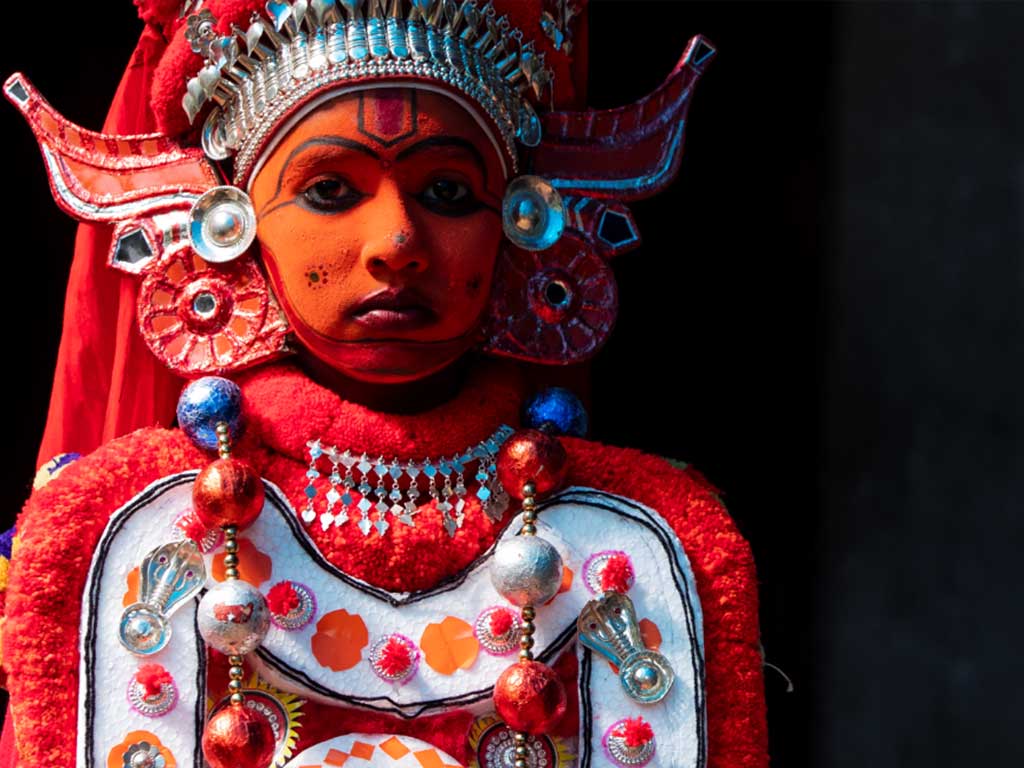Tulu Nadu
Tulu Nadu, the land of tulu speaking people spreads over to parts of present Karnataka and Kerala. This region consists of the Dakshina Kannada and Udupi districts of Karnataka and the northern parts of the Kasaragod district of Kerala up to Chandragiri River.
Tuluva, the ethnic group adds up to the majority of the population in this region. The Tuluvas are mostly concentrated in the coastal areas. Konkanis who migrated from Goa, the smallest state in India are the next major ethnic group here.
Tulu Nadu sprawls over an area of 8,441 km2 (3,259 sq mi) and is bounded on the west by the Arabian Sea and on the east by the Western Ghats.Tulu Nadu has a tropical climate and it experiences heavy rainfalls during the Monsoon season.
Historically, Tulu Nadu consisted of two separate lands of Haiva and Tuluva, the two ethnic groups. This region was under the reign of Ballal Kings of Sullia. It is believed that the Bunt/ Nair and the Brahmin migration to Tulunadu might have happened during the lifetime of the Kadamba king Mayuravarma at 345 AD. During the reign of Madhvacharya in the 13th century, around eight monasteries (Mutts) were built in Udupi.
Tulunad was the original homeland of the dynasty that established the Vijayanagar Empire based in eastern Karnataka. Until the 17th century Tulu Nadu was governed by feudatories of the Vijayanagara Empire. The longest reigning dynasty of Tulu Nadu was the Alupas and they were the feudatories of the prominent dynasties of Karnataka.
Over the centuries, more ethnic groups migrated to Tulu Nadu. In this, the Konkanis and Goud Saraswat Brahmins were the major groups who arrived by the sea. In the 16th century after the arrival of Catholics to Tulu Nadu from Goa, various developmental changes occured as they built excellent educational institutions which contributed to the development of education in the region. The Muslim community of Tulu Nadu was basically Arab traders who married local women and settled there.
After the British defeated Tipu Sultan in 1799, Tulu Nadu was attached to the Madras Presidency before being reverted to the state of Mysore. It was then named as Karnataka. Later the states were reorganized on linguistic basis in the 1956 and Kasargod became part of the newly formed Kerala state.
Art Forms The Yakshagana, a night-long dance and drama performance practiced in Tulu Nadu is a popular art form with great fanfare. Yakshagana is a typical south Indian folk dance form said to have originated around 400 years ago in Karnataka state of India. It is similar to Kathakali of Kerala and has a strong classical background.
The performance comprises of dance, music and spoken words with the themes based on Hindu epics like Mahabharatha and Ramayana. The costumes of the Yakshagana artistes are very attractive and different.
LanguageSpoken by over three million people, Tulu is a Dravidian language of India. Most of its speakers are native to the districts of Dakshina Kannada and Udupi in the west of the state of Karnataka and Kasargod district of northern Kerala. Other major languages in the area are Kannada and Konkani. The Tulu speakers are known as Tuluvas. The Tulu script is also known as the Tigalari script and it has resemblance with Malayalam script.
EconomyTulu Nadu once depended on agriculture and fishing. The major crops grown in this region were rice, bengal gram, horse gram, vegetables and fruits. Plantation crops like coconut, areca nut, cocoa, cashew nut, and pepper are also grown. Tulu Nadu contributes the second highest revenue to Karnataka state after the city of Bangalore. This region has an international airport at Mangalore which is well connected to the rest of India and Middle Eastern countries. New Mangalore port (NMPT) is one of the major ports of India and located at Panambur, Mangalore.
EducationTulu Nadu is one of the most prominent Educational centers on the western coast of India. There are more than hundred professional colleges in Tulu Nadu which represents the standard of education in this region. There are more than thousands of students from all over India and abroad studying in these institutions.
Linguists have suggested that the word Tulu literally means water. In Tamil tuli means drop of water, and tulli means the same in Malayalam. Hence Tulu means the language of the waters. Tulu-speaking people can be found in the coastal region of modern Karnataka and parts of Northern Kerala.
As per the Malayalam works like Keralolpathi and Sangam literature in Tamil, this region stretched from the Chandragiri river, now part of the Kasaragod district of Kerala, to Gokarna, now part of Karnataka state. The cities of Mangalore, Udupi and Kasaragod are the cultural centres of Tulu culture.
During World War I, a large number of Tulu speaking people migrated from undivided South Canara district to other provinces (regions). The next set of emigration was during World War II and this time they settled in interior parts of Karnataka and coastal areas of Andhra Pradesh. Even today Tulu is widely spoken in the Dakshina Kannada, Udupi district and Uttara Kannada districts of Karnataka state and Kasaragod of Kerala. Efforts are also being made to include Tulu in the list of official languages of India.


 Languages
Languages